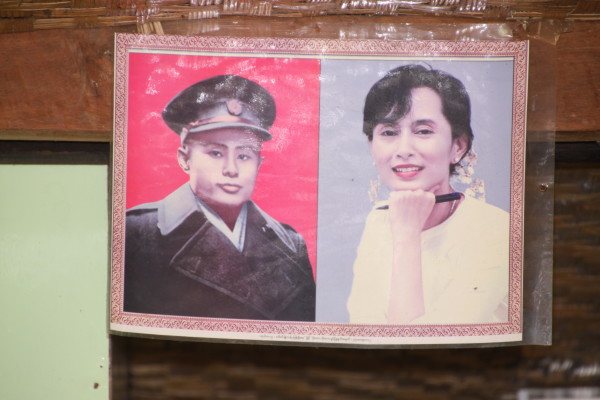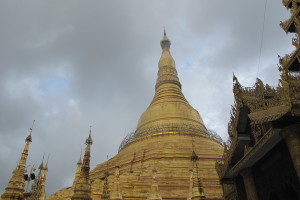I must apologize again for my intermittent blogs. I am not used to writing a regular journal nor have I developed the habit of writing at a certain time in the morning or reading the newspaper every day. I cannot dispense ideas at the spur of the moment or write about important issues unless I have had the opportunity to assess the implications of an event. I cannot talk about my daily activities and chores either. From the social network media I have seen, participants/bloggers even write about and post photos of what they eat or something mushy or trashy they have read in the media, an enormous trivia if there’s one. I do very little socializing because I have a small circle of friends and most of them do not live in the area. My personal life revolves around a few things that I can count on the fingers of one hand – following the Daoist canon and practices (including Qigong and Neidan/internal alchemy), going to the gym whenever I can for a regimen of Classical Yang Family Tai chi chuan fist and weapons Wudang forms and Buddhist Shaolin sets, reading materials (books, magazines and journals) I could get hold of. (Right now I am studying Kalachakra, a subject related to phowa and bardo.) I go to Barnes & Noble café in Easton, PA in the afternoon twice or thrice a week (as much to read the magazines on the rack as to be in an environment with people) and nursing a cup of Iced Caffe Americano Venti (which I try to give up for tea). How many times can you rehearse this routine for the website?
I was going to post photos of the September tour to the Silk Road in China, covering Xian, Dunhuang, Turpan and Urumqi, when the elections in Myanmar/Burma happened. As of this writing, I do not know the actual results – meaning I do not know the exact details and the eventual outcome. Who knows what the generals will do? After all, with a word or gesture, they can nullify the election results, disenfranchise voters or demonetize currency (which they have done in the past) and do whatever it is they fancy … unless serious pressure on their wealth, position or security is applied. The good news is that the people of Myanmar had spoken overwhelmingly in favor of democracy. I know that in a dictatorship the big challenge for the people is in developing creative ways of living/surviging and protest. There are many ways of rebellion but basically they fall into two categories : one is joining the underground (often associated with an ideology) and taking up arms; the other is the non-violent resistance (often a united front strategy of peaceful confrontation). Both tactics have their drawbacks and advantages. Part of my interest is the study of the history of different liberation movements, including the methods of warfare.

For many years, the Philippines suffered under the dictatorship of President Ferdinand E. Marcos and his “New Society.” The resistance followed two different paths – the radical underground and civil disobedience. There was also a united front. In both Myanmar and the Philippines, two charismatic women, both widows and educated, played prominent roles in the struggle: both followed the route of free elections and non-violent protest and “people power.” The countries are different from each other, but in a real sense, similar: The Philippines has a large Christian population with a Muslim minority; Myanmar is Buddhist with a Muslim minority also. Religion will no doubt play a role in the democratization process.
It takes time and much work to develop democratic institutions, culture and tradition. Even if a dictator or a junta is toppled, another insidious system or program is installed. Or much of the same repressive process and conflict will continue. In the Philippines, after the “revolution” of February 1986, there were coups by the military, a convention was held to amend the constitution (ultimately to write a new one) that included provisions that were meant to protect the country against another dictatorship and remedy the problems of the country, political prisoners were amnestied/freed, and there was a serious move to bring to justice the perpetrators of tortures and disappearances. (How much was actually accomplished is another issue altogether. I had touched upon these matters in an essay “February 1986” in the Writings section.) Myanmar will have to address certain issues in the near future – what is to be done with the military establishment? How is the constitution going to be amended to institute democratic reforms and ideas? What happens to the political prisoners and the victims of torture and disappearances? What will the new government do with those responsible for human rights violations?
Healing a country and its people after a brutal dictatorship is always a difficult work.
After the fall of Marcos, I went home to the Philippines for a few months in early 1986. I returned for another 6 – 7 months in late 1986 up to mid-1987. I travelled around the islands. I returned again and again in the subsequent years often to teach and meet with healers and academicians. (Full disclosure: I am a Filipino citizen.) I saw that bringing harmony and peace is a big challenge. The leaders of the previous regime are there, with their ill-gotten wealth, living in their villas and thriving and immune from prosecution. How do people forgive each other? How do enemies live together under the same roof and in the same land? How do you treat the traumas and wounds of life under a dictatorship? How do people let go and forgive? How do they begin all over again? It is always difficult, perhaps impossible to start all over again; somehow, the skeletons and the scars and iniquities keep coming back and haunting the personal and national agendas. Resentment endures, so does the urge for justice, if not revenge. Observe the countries that have a history of authoritarianism and dictatorship and you’ll see these problems again and again.

The photos in the gallery were taken last year on a short tour of Myanmar. Included are pictures of places and people and temples I saw. There is really no need for further commentary at this point. I dedicate these pages to the courageous and determined people of Myanmar; I hope they will be able to navigate the momentous transition to democracy without any more opposition and interference from the kleptocratic military. Some of the photos are organized, many are random. I wish I had a better photographic sense and knowledge of technical formatting to do justice to the country. (There are more photos in an earlier blog on Myanmar.) At the same time, I could say that I could only hint at the heart-breaking beauty of the country and the gentle soul of its people. I had read the books “The Rebel of Rangoon” by Delphine Shrank and “Lizard Cage” and “Burmese Lessons” by Karen Connelly. I recommend these books by these brave and redoubtable women to those who are interested in following the events in Myanmar.
Best,
Rene
www. renenavarro.org
PS: Good news! I received my authorization to practice acupuncture in the Philippines.